Black Dragon Wash - Upper San Rafael Swell
Black Dragon Pictograph Panel
A mysterious red pictograph (painted) panel accompanied by petroglyphs (pecked images) lies within Black Dragon Wash in the San Rafael Swell. Within a fenced area visitors may view several elongated human and animal like pictograph images attributed to the ancient Barrier Canyon culture. Stylistically different Fremont petroglyphs are located adjacent to the Barrier Canyon pictographs. In the past someone chalked the outlines of the pictograph images, a practice now known to irreparably damage fragile rock art resources. The person chalking the images combined several figures into what appears as a Dragon-like image. This “dragon” gives the canyon its name. Visitors to the site enjoy a short hike to the panel up through the wash and into the San Rafael reef. Nearby canyons and the wash itself provide additional hiking and photography opportunities. The road to the panel is sandy in spots and requires a high clearance vehicle. Do not travel into the area unless you are familiar with desert travel and are aware of the weather conditions.
BLM Info:
Phone: 435-636-3600
Email: utprmail@blm.gov
ADDRESS: 125 South 600 West Price, UT 84501
Directions To Black Dragon Wash Road:
The turn off for Black Dragon Pictograph Panel is approximately 13 miles west (Mile Post 147 when traveling West from Green River) on Interstate 70 from Green River, UT.
The following was copied from an article “Controversial Interpretations of the Black Dragon Pictograph” by Jeff Mitton (Published 12/08/2020)
In 1947, John Simonson published a paper describing his application of chalk to clarify the size and shape of what he perceived to be a large, winged monster. Several decades later a geologist expressed his impression that the pictograph resembled a pterodactyl. In the late 1990s young-earth creationists, who believe that earth is between 6,000 and 10,000 years old, started using the black dragon pictograph as evidence that pterodactyls and Native Americans lived at the same time.
When experts in the Barrier Canyon style of pictographs and petroglyphs looked at the panel, they saw five separate figures, not one dragon."
Evolutionary biologists have found fossil evidence of 110 species of pterosaurs, with wing spans ranging from 10 inches to over 33 feet. Pterosaurs, including pterodactyls, persisted for 150 million years but none of the species survived the meteor strike that triggered the extinction of all the large dinosaurs 65 million years ago. Genetic data enabled evolutionary biologists to estimate that the first fully modern humans lived in southern Africa 200,000 years ago.
When experts in the Barrier Canyon style of pictographs and petroglyphs looked at the panel, they saw five separate figures, not one dragon. Convinced the pterodactyl interpretation of the pictograph was incorrect, archeologists studying rock art used two techniques to critically examine the Black Dragon Panel and to put the controversy to rest.
The first technique was Dstretch, a digital imaging tool designed to enhance photographs of pictographs. It is capable of revealing the presence of pigments faded to the point that they are no longer visible to the human eye. The second technique was x-ray fluorescence, which measures the iron concentration in the red pigment, to clearly discern exactly where Native Americans applied pigment on rock surfaces. Each of these techniques produces results independent of the preconceived notions of the user. Dstretch and x-ray fluorescence were in agreement in their resolution of the Black Dragon Panel into five separate pictographs. On the left are two small figures, a bighorn sheep and a dog. Next is a large, bug-eyed anthropomorph with a snake in its hand. Further to the right is the figure of a man, bent at the waist with arms outstretched in supplication. The last figure to the right is a large, sinuous horned snake. All five figures are characteristic of the Barrier Canyon Style, which was used from 4,000 to 1,500 years ago, and was named for a series of rock art panels along Barrier Creek, just 45 miles away.
In the 1940s, Simonson misinterpreted a pictograph that had faded from thousands of years of sunlight, rain and accumulation of salt scale. Then he “Chalked” the outline of what he thought he saw. His imagination turned the figure of a supplicating man into the neck, head, and beak of a monster. In the 1970s the chalk outline suggested a pterodactyl to an innocent geologist and in the late 1990s that suggestion was embraced uncritically by young-earth creationists motivated by a religious agenda.
It would be grand if Native Americans saw pterodactyls with wingspans exceeding 33 feet soaring in the sky, but it never happened. All the pterodactyls were gone 65 million years before the first modern humans arose.
Link to the Full Article by Jeff Mitton:
https://www.colorado.edu/asmagazine/2020/12/08/controversial-interpretations-black-dragon-pictograph
-
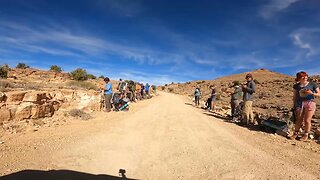 12:11
12:11
Cactus Hill
1 year agoReds Canyon Loop Part 3 - Lower San Rafael Swell
50 -
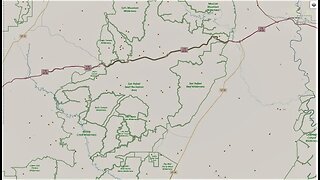 23:54
23:54
Cactus Hill
1 year agoReds Canyon Loop Part 2 - Lower San Rafael Swell
23 -
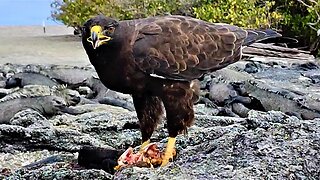 1:32
1:32
GalapagosGuys
1 year ago $7.33 earnedNature's brutal side is obvious as Galápagos hawk devours marine iguana
7.68K15 -
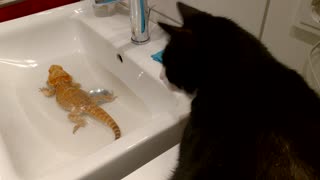 1:13
1:13
Animals
5 years ago $49.22 earnedBearded Dragon Shoos Off A Kitty Intruding His Bath
14.8K1 -
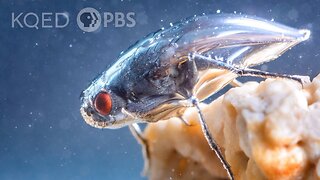 5:43
5:43
DeepLook360
9 months agoThis Daring Fly Swims in a Shimmering Bubble Shield | Deep Look
212 -
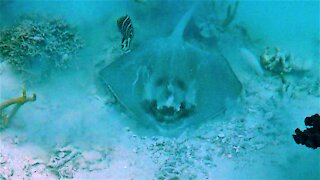 0:45
0:45
WildCreatures
3 years ago $9.39 earnedStrikingly clear devil face found on unusual stingray in Tonga
11.2K17 -
 6:16
6:16
Paleontology
9 months ago $0.02 earnedA Massive T.rex Bigger Than Scotty! E.D. Cope: The New King
26 -
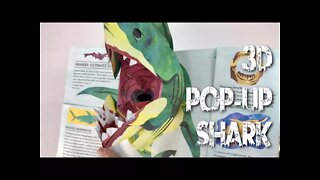 4:55
4:55
Peter von Panda
6 years agoSHARKS & SEA MONSTERS 3D Pop-Up Book Review
65 -
 1:06
1:06
WildCreatures
1 year ago $9.32 earnedGiant Galápagos tortoise provides up-close footage of its underbelly
7.52K19 -
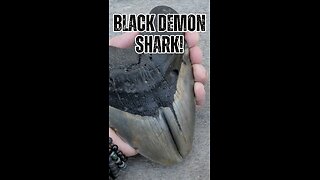 0:57
0:57
The Ancient Enigma Files
5 months ago🌊🦈 Unveiling the Depths: The Black Demon Shark of Baja Mexico 🌌
841